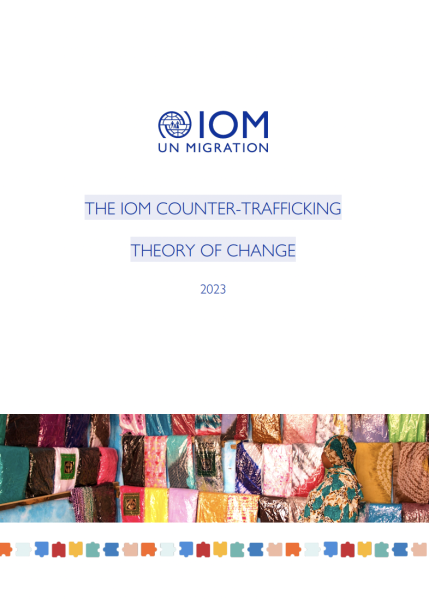The IOM Counter-Trafficking Theory of Change

This document provides guidance to support the design and implementation of effective counter-trafficking projects that fit within a cohesive approach to thematic programming across the Organization focusing on what works and what we do best to achieve greater impact.
Specifically, it identifies eight intervention models which, cumulatively, have the greatest potential to generate the change IOM seeks to achieve in fighting human trafficking. These models are:
- Delivery of case-management services;
- Capacity-development for service provision and protection;
- Referral system strengthening;
- Strengthening of private sector responses;
- Promotion of ethical recruitment;
- Capacity-development of justice systems;
- Technical assistance for law and policy development; and
- Research, and data collection and management.
For each of the models, the document maps what IOM aims to achieve and how describing the process from the identification of the problem through descriptions of the outcomes and desired impact. Working with local partners, IOM staff can draw on these as a resource to plan, design and implement projects in their specific context.
The document also provides guidance, including basic measurement options, to strengthen the evaluation, replication, and adaptation of IOM counter-trafficking projects. Over time, more systematic and robust project evaluations will help IOM produce well-tested, well-articulated, and scalable models of practice, which will contribute to the global evidence base of what works in response to human trafficking.
| Pièce jointe | Taille |
|---|---|
| Download | 50.62 Mo |
